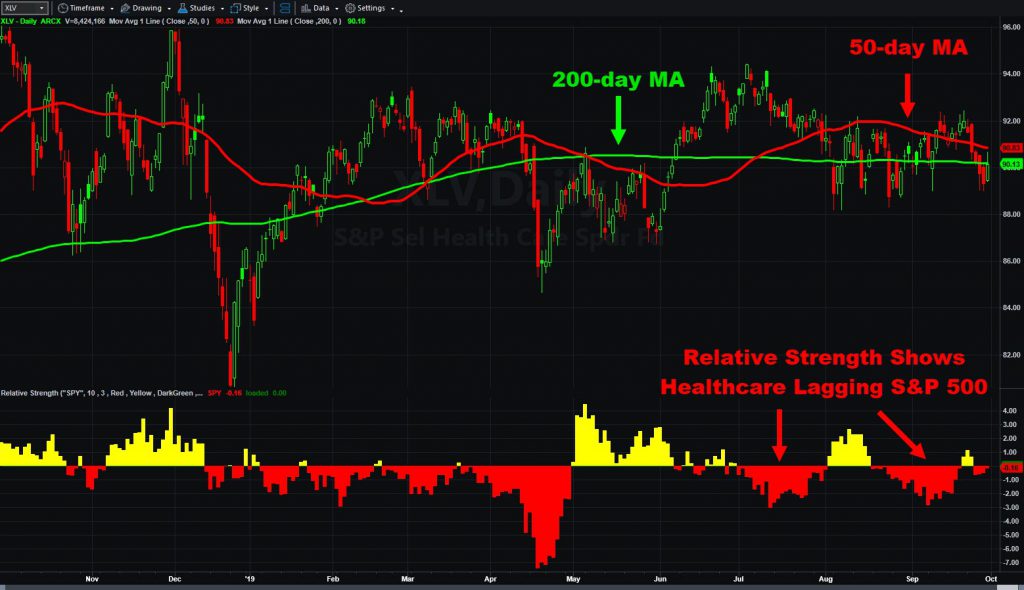Two strange things happened last quarter: Chip makers went up and health-care stocks went down.
The Philadelphia Semiconductor Index ($SOX) rose almost 7 percent between June 28 and September 30. Meanwhile the SPDR Health Care ETF (XLV) slid about 3 percent.
This is unusual because investors were concerned about a recession. Normally the textbook says to avoid highly cyclical stocks like chip makers when the economy is weak. Conventional wisdom also favors “safe havens” like health-care, which can survive in a slower economy.
This time it was different because semiconductor experts see business improving soon — especially if there’s a trade deal with China. They’re especially bullish about the longer-term opportunities from 5G networks.
Health-care, on the other hand, seems to face rising political risk. Maybe that’s why Pfizer (PFE) and UnitedHealth (UNH) were the two worst performers in the Dow Jones Industrial Average last quarter. Biotechnology stocks also slid about 10 percent.
Energy was the weakest major sector, down 7 percent. Crude oil (@CL) still faces a glut of supply and weak demand.

Housing on the Move
Homebuilders were the best performing major industry group, with the iShares US Home Construction ETF (ITB) advancing 13 percent. Housing stocks have enjoyed a string of positive data points lately. Here’s a recap in case you missed them:
- 9/17: NAHB’s homebuilder sentiment index was 68, ahead of the 66 estimate.
- 9/18: Government numbers showed housing starts running at a 1.36 million annualized rate in August. That not only crushed estimates. It was also the highest reading since June 2007.
- 9/19: Existing home sales rose 1.3 percent in August. Economists expected a 0.4 percent drop.
- 9/25: New home sales for August ran at a 713,000 annualized pace, 53,000 more than forecast.
- 9/26: The pending homes sales index rose 1.6 percent in August, beating the 0.9 percent estimate.
Housing partially benefited from interest rates dropping to a three-year low during the third quarter. The same move lifted other “income stocks” like utilities, real-estate investment trusts and consumer staples.
Gold miners were also big movers. They initially rallied on economic fears, but then they fell sharply as tensions calmed between President Trump and China. Will traders view more “good news” on tariffs as bad news for precious metals?
In conclusion, the third quarter saw noteworthy strength in chip stocks and a bullish finish for homebuilders. Health care remains surprisingly weak. Other sectors acted as you might expect, given interest rates and the economy.

























